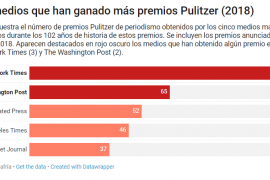[dropcap letter=”I”]
n a scene of the movie adaptation of Bref Easton’s American Psycho (Vintage Books, 1991), we are taken from an aerial view of New York’s skyscrapers to the corridor of one of the hundreds of Manhattan offices where Patrick Bateman, the protagonist walks towards the office while listening to Walking on sunshine on a latest Walkman model, notably improved compared to the first model sold on July 1st, 1979. Although the market price of the first version of the device was out of reach for most wallets ($ 150), the machine that revolutionized the way we interact with music would take a few months to become popular all over the planet.
The device had different names according to the geographic zone: Soundabout, Freestyle, Spowaway, but it was Walkman the one that prevailed. And it was one of the co-founders of the Japanese multinational Sony who caused the outbreak, because the idea of a gadget that allowed you to listen to music where and when you wanted had already been dreamt, designed and even prototyped. But until the Japanese businessman, tired of not being able to listen to opera during his intercontinental flights, did not appear at board’s meeting table where the rest of his colleagues were sitting and probably said something like “gentlemen, we have to start walking on the wild side [doo doo doo doo doo doo…]”, the miracle of Nobutoshi Kihara -this is how the businessman was called- comparable to the multiplication of the loaves and fishes and, therefore, difficult to overcome, did not come true.
The Walkman suddenly opened a dimension that until now had been relegated to collectors: discovering and sharing styles, groups and trends became one of the first massive social networks
Since the Walkman we have walked from one place to another next to Michael Jackson, David Bowie or Tracy Chapman, we danced Don’t Get Me Wrong at the park and we got dizzy with Insurrección by Manolo García and Quimi Portet or El carrer dels torrats by Sopa de Cabra. Some have mourned in the back seat of the parents’ car on the way to the campsite; not only as a consequence of a ballad, but also because of having to swallow, once again, the latest work by Mocedades. And we all have enjoyed the collateral effects of the invention, as is the case of the proliferation of playlists on pirate tapes, a prelude to those we now create on Spotify, iTunes or You Tube Music. It was necessary to develop the dexterity, reserved to experts, which meant synchronizing the needle of the turntable with the play and rec keys, and the ability to rewind cassettes on devices that only had the forward key: stop the tape, remove the tape, change sides, press forward, press Stop, remove the tape, change sides, press Play, still missing, restart the tape, remove the tape, change the face… until the hero or heroine became aware of the technique of the ballpoint pen “Bic”, used as a screwdriver, overcoming the virtuosity of the Walkman and, of course, the prodigy of the loaves and fish.
The Walkman suddenly opened a dimension that until now had been relegated to collectors: discovering and sharing styles, groups and trends became one of the first massive social networks, and the spread of music, understood as a gift for the senses, increased dramatically. The nomadic player is also credited for being one of the first domestic robots that promoted the isolation that we are currently experiencing thanks to smartphones. In fact, the reason I wrote this article is related to the realization of this principle of isolation through a photograph of myself, when I was five or six years old (more than thirty ago). In the photo, close to a farmhouse near the village of Llitera, I appear with my cousin, who was probably twenty, back then. The context is a family Sunday lunch and it is likely that the night before, she enjoyed herself at Florida 135. I show the face that we all have shown next to female cousins, those desirable beings to whom Manel refers to in the album Jo Competeixo.
The cousin, seated in a textile folding chair, wore dungaree jean, white Victoria sneakers and dark Ray Ban sunglasses. She looked annoyed, as if someone had just disturbed and taken her away from the universe that was contained in the cassette that played inside her Walkman, whose headphones she had on. Maybe she was reviving an anecdote from the early morning, maybe a look, a conversation, a kiss, a meeting in that cavern nearby the gates of de “Monegros’ Farwest”. Perhaps, what played, were the Beatles: “only time will tell if I am right or I am wrong,” one would hear in a piece that could have been, perfectly, We can “walk” it out.



















